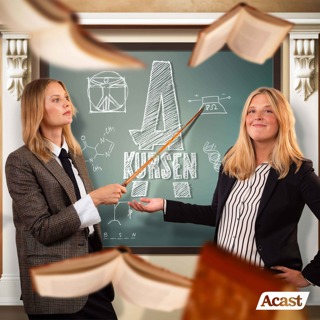
“Operation Popeye” and HAARP are Not to Blame for Hurricanes Milton & Helene
Meteorology Matters looks into how HAARP and Cloud Seeding did not create or drive Hurricanes Helene and Milton by providing a review of 43 studies published between 2012 and 2021 that examine conspiracy theories related to weather modification and climate change. The review provides insights into the prevalence, characteristics, and potential consequences of weather and climate change conspiracy theories, as well as exploring the science that debunks those theories. We identify knowledge gaps in existing research, emphasizing the need for greater geographic representation, improved conceptualization of the topic, and a more integrative approach that considers multiple factors and processes involved in the interplay between conspiracy theories and weather/climate change.
24 Okt 202418min

DeSantis Backed Florida Law Benefits Insurance Companies to Deny Claims After Hurricanes Helene & Milton
Meteorology Matters explores the growing problem of insurance companies failing to adequately cover homeowners after hurricanes in Florida, specifically focusing on issues since a Governor DeSantis supported law change. We highlight the challenges facing homeowners, insurance companies, and policymakers in the wake of increasingly severe weather events. We examine the implications of Florida’s insurance law changes, which are intended to reduce litigation but are further disadvantaging homeowners. Additionally, we talk about the importance of flood insurance and how the lack of adequate coverage is leaving many homeowners financially vulnerable.
24 Okt 202410min

Hurricane Catastrophe: Lower Income People Affected Disproportionately with Little Help
Meteorology Matters examines the increasing vulnerability of low-income communities and communities of color to weather impacts, specifically hurricanes. They highlight how these groups are disproportionately affected by storm surges, flooding, and power outages due to their location in high-risk areas and lack of resources for preparedness and recovery. We discuss the need for better federal disaster relief and recovery policies that prioritize these vulnerable communities, including increased funding, streamlined application processes, and more comprehensive climate resilience measures. We also showcase examples of innovative solutions, like the Hunters Point community in Florida, which is designed to withstand hurricanes with features like solar panels, battery systems, and elevated construction but affordability keeps homes like these out of reach for almost everybody.
23 Okt 20246min

FEMA - National Flood Insurance Program’s 50% Rule
Meteorology Matters breaks down the Federal Emergency Management Agency's (FEMA) "50% rule," a regulation that impacts homeowners in flood-prone areas. This rule states that if a home (structure itself excluding the land) sustains damage exceeding 50% of its market value, it must be brought into compliance with current floodplain management standards, usually by elevating the structure. The rule is designed to discourage rebuilding vulnerable properties in flood zones and prevent the government from bearing the cost of repeated damage. The sources explain the details of the rule, how it is applied, and the debate surrounding its implementation, particularly in Florida, where communities face an ongoing threat of hurricanes and rising sea levels. Homeowners and local officials often find themselves in a difficult position, balancing the need for rebuilding with the financial burden of complying with the rule, which can make it challenging to afford housing in flood-prone areas.
22 Okt 20247min

Engineered for Hurricanes: The “Three Little Pigs” Were Almost Right
Meteorology Matters examines the impact of hurricanes and extreme weather on residential buildings. Many Europeans believe their older buildings are stronger than American’s when in reality they’re not engineered to handle extremes, while survivorship bias may play a role in their perception. While many think the “Three Little Pigs” are the end all and be all of tough building examples, engineering plays a vital role in how those materials actually perform. Wood can actually perform better than concrete if it’s engineered better than brick for example. We analyze different building materials and construction techniques, exploring their resistance to high winds, storm surge, and flooding. Then dive into the importance of strong connections between building components, such as roofs and walls, and explore vulnerabilities in different types of construction, such as wood-framed homes. Highlighting the importance of understanding regional wind vulnerabilities and using building codes and design practices that meet local needs, research emphasizes the need to address the growing problem of residential building failures due to extreme weather events, particularly in areas prone to hurricanes and tornadoes.
21 Okt 202414min

NO, Hurricane Milton and Hurricane Helene were NOT Products of Weather Control but were Influenced by Climate Change
We debunk the claim that Hurricanes Helene and Milton were artificially engineered or manipulated by the government, HAARP, or other individuals or groups. Experts in meteorology, geoengineering, and atmospheric research confirm that the technology needed to control or create hurricanes does not exist. They attribute the intensity of these storms to natural processes, emphasizing the role of climate change in intensifying hurricanes. We further expose the spread of misinformation online, particularly among right-wing influencers and accounts, highlighting the potential dangers of these unfounded theories. They underscore the importance of critical thinking and reliance on credible scientific sources in the face of such misinformation. While climate change may be influencing hurricanes in some ways, most notably by rapid intensification, these conspiracy theories lack real evidence and have no basis in science.
19 Okt 20249min

Tampa Soap Opera: Hurricane Evacuation Defier “Lieutenant Dan” Arrested After Surviving Helene and Milton on Boat
Joseph Malinowski, is the Florida man who went viral for his decision to ride out Hurricanes Helene and Milton on his small sailboat. He was dubbed "Lieutenant Dan" after the character in Forrest Gump because he was missing a leg among other similarities with the movie character and garnered considerable attention online. While he initially received support and even donations, Malinowski was eventually arrested for trespassing and failing to appear in court. We detail his legal troubles, as well as the concerns of his daughter who fears the attention will negatively impact her father.
19 Okt 20249min

Florida Homeowners Sell Due to Hurricanes, Flooding and Out of Control Costs
Florida is facing a number of issues related to the insurance market and hurricanes. Insurance premiums are at an all-time high, with many homeowners facing an increase of up to 400%. The recent hurricanes, Helene and Milton, have caused billions of dollars in damage, further straining the insurance market. Some insurers are raising rates, while others are pulling out of the state entirely, leading to a shortage of insurance options. This is leading some homeowners to sell their properties at a loss, while others are hesitant to buy homes in Florida due to the risk of hurricanes. Despite the challenges, some residents are choosing to stay in Florida, citing the benefits of the state's weather, attractions, and overall lifestyle as outweighing the risks of hurricanes. There is also a growing interest in building hurricane-resistant homes, particularly domed structures, which have been proven to withstand even category 5 hurricanes. However, the high cost of building these homes presents a significant barrier for many.
18 Okt 202411min





















